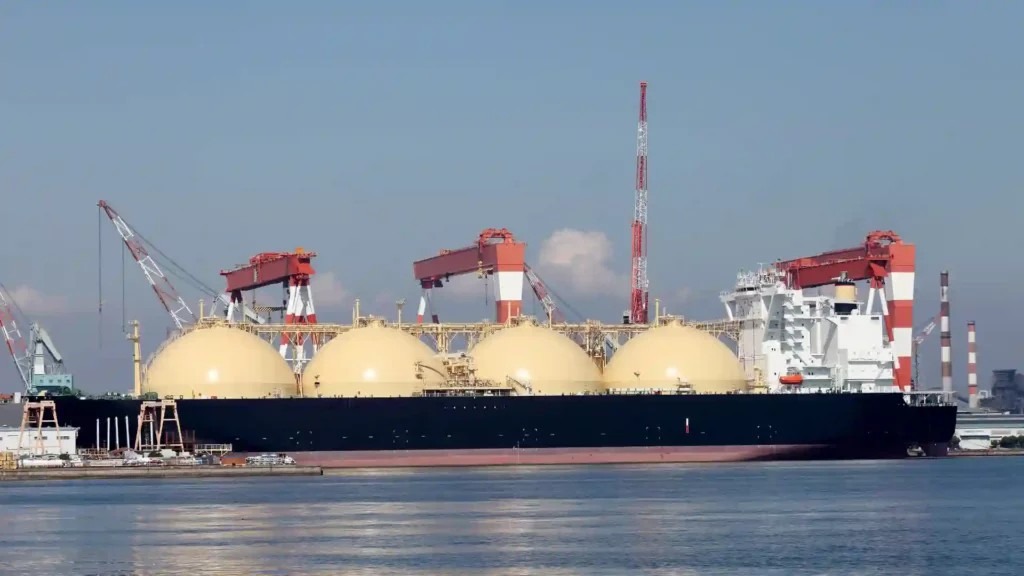Adnoc Gas is increasing its LNG operations in anticipation of a market oversupply in the coming years, as several large projects are scheduled to come online
Adnoc Gas is said to ship liquified natural gas cargoes to Europe or Asia depending on the market that is more profitable.
According to Peter van Driel, chief financial officer of Adnoc Gas, the company, which is the integrated gas processing unit of Adnoc, produces 6 million tonnes of LNG annually from its Das Island liquefaction plant off Abu Dhabi, and the majority of the output is bound by long-term contracts.
The consistent heatwaves in Asia has increased the demand for gas in South Korea and Japan while on the other hand the European gas prices are pulled down by high inventory levels. The gas storage levels of the EU have reached ahead of winter by 90% capacity.
The material impact from the increased shipping costs that are caused by the Red Sea shipping turmoil was a new experience for the Adnoc Gas company.
The global trade was disrupted by many attacks on vessels done by Yemen’s Houthi. This led to a hike in fuel costs, insurance premiums and security measures for ship operators. In 2023, the Suez Canal, a major waterway connecting the Mediterranean and Red Seas, processed approximately 12% to 15% of global traffic.
Long term charter deals were signed by Adnoc Gas with most shipping companies. This saves them from the cost volatility.
With access to 955 of the UAE’s natural gas reserves, boosting exports of products like LNG and naphtha is a crucial part of the growth strategy for the Abu-Dhabi based company.
Adnoc Gas distributes to its customers which are mostly utilities and industrial companies through an extensive network of pipelines in the Emirates. The company plans to acquire Adnoc’s controlling ownership in the Ruwais LNG project, which will have a total capacity of 9.6 million tonnes per year. It is slated to begin in the second half of 2028.
Many international energy giants like BP, Shell, TotalEnergies and Japan’s Mitsui were each equally awarded 0% of the equity share as a part of the project last month.
Approximately 70% of Ruwais LNG production capacity has already been secured through sales commitments.
Adnoc Gas intends to invest more than $13 billion by 2029 to explore domestic and international growth prospects, according to a statement issued in April.
Adnoc Gas is increasing its LNG operations in anticipation of a market oversupply in the coming years, as several large projects are scheduled to come online.
The International Energy Agency predicts that a spike in LNG projects beginning in 2025 will provide more than 250 billion cubic meters (bcm) of new capacity per year by 2030.
This new capacity accounts for approximately 45% of the current global LNG supply, with the most major expansions taking place between 2025 and 2027, mostly due to projects in the United States and Qatar, according to a research released last year.
LNG purchasers are signing long-term contracts for future supplies, despite the fact that the market oversupply is projected to drive down prices in the coming years, according to Mr van Driel.
“The security of supply is what is actually important. As a result, people enter into long-term contracts despite knowing that supply and demand are temporarily out of balance. “It’s not just about the price,” he explained.
“Some buyers even pay a small premium to lock that in.”
Adnoc Gas signed a 10-year agreement in January to deliver 500,000 metric tons of LNG per year to Gail India, a state-owned natural gas utility.
In order to reduce dependency on the highly polluting coal amid an foreseen surge in power demand, the emerging economies in Asia are likely to increase the share of natural gas.
China, the world’s largest coal consumer, is expected to raise natural gas use to 12 percent of its primary energy mix by 2030, up from 8.7 percent in 2020. India, the world’s second-largest coal consumer, plans to increase the amount of natural gas in its total energy mix to 15% by 2030, up from approximately 6% today.
